How to Connect Your Phone to Philips TV Using USB
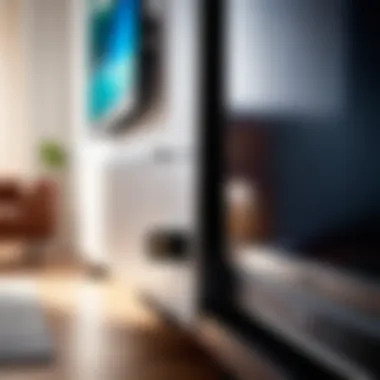
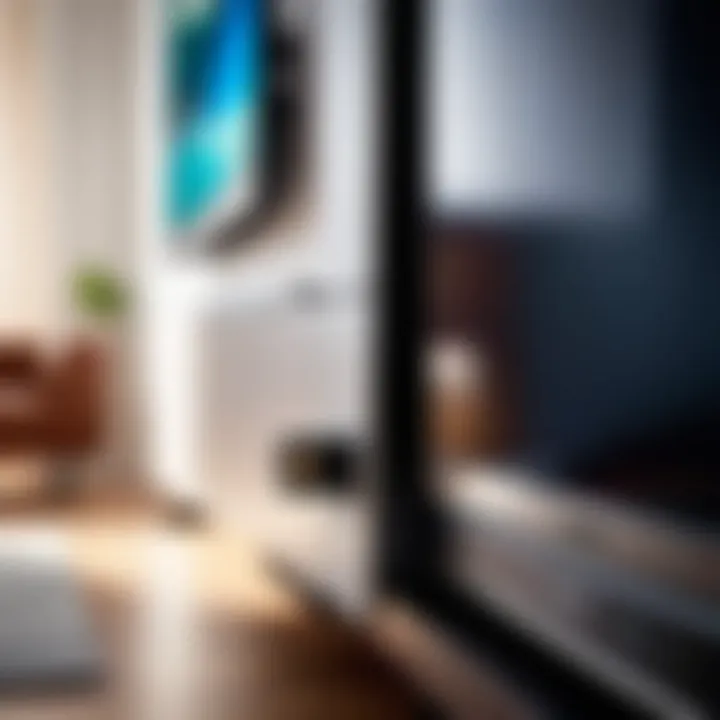
Intro
Connecting your mobile device to a Philips TV via USB can seem like a daunting task, especially if you're not tech-savvy. However, this process is simpler than it appears and can open the door to an array of possibilities, enhancing your viewing and sharing experience. Imagine quickly transferring photos, videos, or even mirroring your device's screen onto a larger display. Certainly, this not only makes your media more accessible but also turns your living room into an entertainment hub.
This guide is designed to illuminate the steps necessary to achieve a seamless connection between your phone and Philips TV, emphasizing the vital prerequisites and potential hurdles one might encounter. By the end of this article, you'll confidently navigate your connectivity options, ensuring that you are not just a passive viewer, but an active participant in your media consumption.
The emphasis will be on usability, compatibility, and enriching your technology interactions. Let’s dive into the essentials of connecting your phone to a Philips TV via USB.
Understanding the Purpose of USB Connections
Understanding the role of USB connections is crucial when it comes to connecting your device, like a phone, to your Philips TV. It’s not just about plugging in a cable; it’s about unlocking a world of multimedia possibilities that enhance the viewing experience. USB connections allow for seamless data transfer, enabling you to enjoy content directly from your phone on a larger screen.
One key element to consider is the versatility of USB. Not only does it connect devices, but it also supports various formats and functions. For instance, USB ports can handle not just video and audio files, but also pictures and documents. This means you can share your vacation snaps, watch videos stored on your phone, or even browse through a presentation without the need for additional devices.
Exploring USB Functionality
USB has evolved over the years into a standardized interface for connecting numerous devices. It offers various functionalities, making it a go-to for many. For example, data transfer is a primary function; it allows devices to communicate and share files efficiently. This is particularly useful when switching between devices, like viewing photo albums or sharing videos.
Moreover, USB connections enable charging capabilities. When you connect your phone to the TV, it can recharge while sharing media, a practical aspect that avoids draining your phone’s battery during long binge-watching sessions.
It's also worth noting that different USB versions, from USB 2.0 to USB 3.2, enhance performance in terms of power and speed, allowing for faster data transfer rates which is especially important for high-definition content.
Common Uses of USB with TVs
When we consider USB connections with TVs, it’s easy to see there are several common applications:
- Media Playback: The most popular use of USB is for media playback. Users can plug in USB flash drives loaded with their favorite movies and shows and watch them on the TV. This convenience is often preferred over streaming services because it doesn't depend on internet speeds.
- Content Transfer: Transferring photos and videos from a phone to the TV allows for larger display enjoyment. It’s perfect for sharing keepsakes from a family gathering or a holiday trip with friends.
- Software Updates: Some smart TVs, including Philips, may use USB connections to update their software or firmware. This ensures the TV remains efficient and capable of using the latest features.
- Gaming and Apps: Additionally, USB can facilitate game console connections to TV. If you use a portable gaming device, connecting it through USB may offer a more enjoyable gaming experience on a larger screen.
Preliminary Requirements for Connection
Before diving into the nitty-gritty of connecting your phone to a Philips TV via USB, it’s crucial to grasp the preliminary requirements that make the process smoother. Understanding these elements paves the way for successful connectivity. These include ensuring that all devices are compatible, having the right type of USB cable, and being aware of settings on both your phone and your television. Without these prerequisites in place, you could find yourself facing a frustrating setup, which could lead to wasted time.
Compatible Device Checklist
In the realm of tech, compatibility is king. Not every phone or TV can play nice with each other. To ensure a seamless connection, here's a rundown to check your devices:
- Smartphone Model: First, check your smartphone model. Most modern Android devices should work fine, but it’s good to verify. If you've got a device from brands like Samsung, Google, or OnePlus, you’re likely in good stead.
- Philips TV Model: Look for TVs that support USB input and file transfer. Models from the last few years should generally be good to go. Check your product manual if you're unsure.
- Software Updates: Ensure your TV and phone are up-to-date with the latest software. Sometimes, connectivity issues arise from outdated versions.
- File System Formats: Be aware of what file formats your TV can read. Common formats include JPEG for images and MP4 for videos. Knowing what works can save you a headache later on.
The compatibility checklist is integral as it ensures that both your phone and TV can communicate without a hitch. This can save you from headaches in the long run.
Necessary USB Cable Types
Now that we've covered what devices you need, let's talk about the type of USB cable you'll want to use. Not all USB cables are created equal, and choosing the right one is key to establishing that connection.
- USB Type-A to Micro USB: This is the most common type for older models of smartphones. If your phone has a micro USB port, grab this cable.
- USB Type-A to USB-C: For newer smartphones that feature a USB-C port, this is your go-to cable. It's becoming increasingly standard and offers a faster transfer rate.
- USB-A to USB-A: If you are using certain Philips TVs that support this connection (like some high-end models), you could use this cable. However, it’s less common than the others.
Ultimately, the right cable helps prevent connection failures and allows for efficient data transfer.
Having the correct cable not only makes the connection possible but also ensures that data can flow effectively. So be sure to do a quick inventory of your cables before diving in.
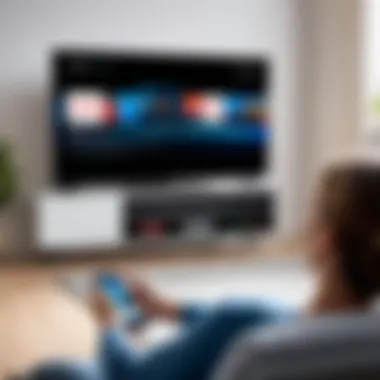
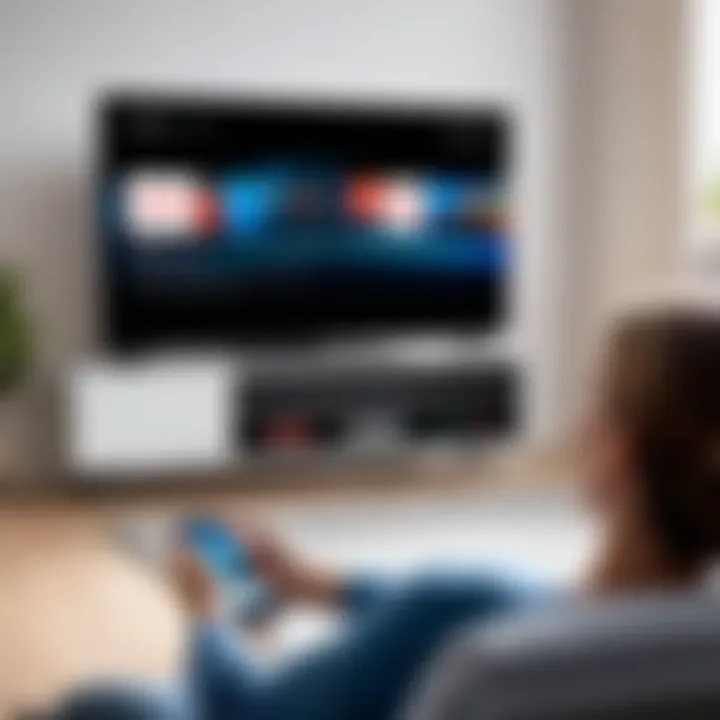
Setup Process for Connecting Phone to Philips TV
When it comes to connecting your phone to a Philips TV via USB, the setup process serves as a crucial bridge between your personal device and your larger screen. This section emphasizes why understanding the setup is key to achieving a seamless experience. The act of hooking up your phone, although straightforward, can easily go awry if one isn't well-informed about what to consider beforehand. The connection not only allows you to enjoy your mobile content in a more engaging manner but also augments your TV's functionality.
From transferring photos of your latest vacation to presenting an important project, being familiar with the connection process can optimize your efficiency and enjoyment. Moreover, knowing the exact steps and the settings needed on your TV will make the experience less time-consuming and frustrating.
Stepwise Connection Guide
The connection process may appear daunting at first, yet it's fairly simple when broken down into its essential steps. Here’s how to get started:
- Gathering Your Equipment: Have your Philips TV nearby and ensure your phone’s battery is charged. You'll need a compatible USB cable. This often means a USB-C or micro-USB, depending on your mobile device.
- Turning on Your TV: Power up your Philips TV and make yourself comfortable on the couch.
- Connecting the USB Cable: Plug one end of your USB cable into your phone and the other into a USB port on your TV. It’s typically located on the back or side. Be gentle; nobody wants a broken cable at this stage!
- Navigating the TV's Input Options: Using your TV remote, navigate to the input source menu. This is usually an easy-to-identify icon resembling a compartment or box.
- Confirming the Connection: Once you've selected the USB input, your TV should automatically detect your phone. If it doesn’t, you might need to unplug and replug the cable.
Choosing the right setup allows for smoother multimedia experiences. When performed properly, it can transform your everyday TV watching into something much more engaging.
Adjusting TV Settings for USB Input
After making the physical connection, it's essential to ensure the TV is set up properly for the best viewing experience. Depending on your model, there may be specific settings that enhance USB functionality.
- Access TV Settings: With your remote, press the settings or home button to get to the main menu of your Philips TV. Look for the option labeled Settings or Setup.
- Explore Input Settings: Within settings, find the section labeled Input Settings or Source Settings. This often provides options to change how the TV interacts with connected devices.
- Enable USB Options: In some models, you will find a specific option for USB input. Make sure this is activated so your TV can communicate with your phone effectively.
- Audio and Video Settings: If your Philips TV has audio and video settings for USB, adjust these according to your preferences. This will help in getting the best quality from your transferred content.
This attention to detail ensures everything runs like clockwork, negating potential frustration during your viewing experience. Remember, a little bit of time spent adjusting these settings can make a world of difference in your enjoyment.
Transferring Media from Phone to TV
Transferring media from your phone to a Philips TV is not just a cool trick; it opens up a new world of viewing potential right from the comfort of your couch. The ability to display photos, videos, or even your favorite music on a larger screen enhances the experience significantly. Think about it: instead of squinting at tiny phone screens, you can enjoy vibrant visuals on a big display, much more eye-friendly and engaging.
Several factors come into play when considering media transfer. For one, it allows for sharing memories during gatherings. Perhaps you've just come back from a vacation packed with photos. Instead of flipping through them on your phone, you can entertain friends and family by showcasing the highlights right on the TV. This leads to more interaction and storytelling, creating an enjoyable ambiance.
Additionally, streaming movies or shows saved on your phone can be a more seamless experience through this method. Whether you’re binge-watching a series on a video app or simply sharing a memorable video clip, transferring media ensures you’re using the best available technology. Not to mention, certain Philips TVs provide built-in media apps which can make this process smoother.
But it's important to note, while transferring content may seem straightforward, it requires attention to file types, connection settings, and the capabilities of both your phone and the TV. Each of these technical points can influence the transfer process, and understanding them will ultimately enhance your experience. So, let’s dive into how to choose what content to transfer and get the most out of your Philips television’s features.
Choosing Content to Transfer
Picking the right content is pivotal in transforming your viewing experience. Not all media formats are created equal. Start by considering the following:
- Image Quality: High-resolution images will look stunning on the big screen. Opt for photos taken with the highest settings on your phone's camera.
- Video Formats: Not every video format is supported. Common formats like MP4 and AVI generally work well, but double-check your TV's manual to avoid potential hiccups.
- File Size: Large video files may take significant time to transfer. It might be useful to compress these files beforehand if you’re in a hurry.
Keeping these factors in mind, you can curate a more harmonious selection of media. Take the time to organize videos and images into folders if needed; this makes navigation easier once you connect to the TV.
Using Philips TV's Media App
Once you have your content lined up, using the Philips TV's media application helps in exhibiting your chosen files on a larger screen seamlessly. This app usually provides a straightforward interface for users, allowing for the mirroring or streaming of media from a connected device.
To use the app effectively:
- Launch the Media App: On your Philips TV remote, look for the media or home button, and choose the appropriate app. It may be labeled simply as "Media" or "USB Drive" depending on your model.
- Select the Source: After opening the app, you need to select your connected device (your phone in this case) as the source.
- Browse Content: The next step is to browse through your media files on the TV. If you've set things up as suggested, you should have no trouble finding your photos and videos.
- Play and Enjoy: Select the media you wish to view and press play; it really is that simple. You should also have options to pause, rewind, or forward just like a traditional remote control.
Remember that using the media app can significantly improve your viewing experience. Philips regularly updates its software, so ensuring your TV has the latest version can unlock new features that enhance compatibility with your phone.
Navigating these processes will set you with a solid foundation to enjoy your media on a grander scale than ever before. As technology evolves, finding new ways to leverage it in everyday life also becomes essential.

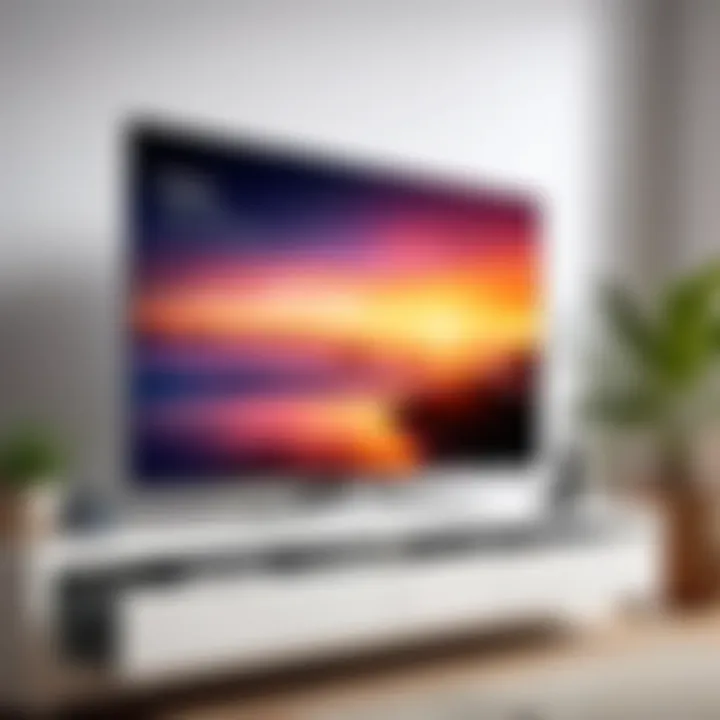
Screen Mirroring via USB: Is It Possible?
Screen mirroring has become a buzzword in the tech world for its ability to bridge the gap between mobile devices and larger screens. But when it comes to connecting your phone to a Philips TV via USB, the conversation becomes a bit more complicated. Understanding the nuances of screen mirroring through USB can help users make the most of their devices while avoiding unnecessary headaches.
The primary allure of screen mirroring is the seamless sharing of content. Imagine showcasing photos during a family gathering or streaming your favorite TV shows directly on the big screen without fussing over network connections. However, many users are often caught wondering, "Can I actually do this via USB?" Let's dive into the details to clarify this.
Understanding Screen Mirroring Capabilities
Screen mirroring traditionally relies on wireless technologies like Wi-Fi Direct or Miracast. However, USB has its own set of capabilities and restrictions. While some might assume USB protocols work perfectly for screen mirroring due to their direct connection, the reality is often different.
- USB Display Protocol: Not all phones support USB display output. Some Android devices do allow screen mirroring through USB thanks to USB-C ports that enable DisplayPort capabilities. This is generally found on newer devices. Always check for compatibility.
- Potential Hiccups: Even if your device supports this feature, the TV must also recognize the USB as a display input. Philips TVs, in specific models, may limit this functionality, creating a situation where it just doesn't work as expected.
- Data Transfer Limitations: Even if your setup allows you to mirror the screen, understand that USB is primarily designed for data transfer, which may lead to lags in high-resolution output, unlike dedicated wireless methods that handle video and audio signals more efficiently.
In short, while it is theoretically possible to mirror your phone's screen to a Philips TV via USB, many factors come into play that can dampen the experience.
Alternative Screen Mirroring Methods
Given the limitations tied to USB connections, it's wise to explore other reliable methods to mirror your phone's display onto your Philips TV.
- Wi-Fi Direct: Some Philips TVs support Wi-Fi Direct, allowing for a direct connection between your phone and TV without a Wi-Fi network. You simply connect any two devices, and whether you're streaming a movie or showing off vacation videos, it generally leads to a smoother experience.
- Miracast: Many Android devices are compatible with Miracast, which can wirelessly cast your device's screen to the TV. This is typically quick and doesn't require messy cables.
- Using Chromecast: If you prefer a more versatile option, consider investing in a Chromecast device. This small gadget plugs into your TV and enables easy casting from various apps on your mobile device, adding a whole spectrum of features to your TV viewing experience.
Don't forget: Always consult your TV’s user manual or online resources for specific instructions related to your model.
Troubleshooting Common Connection Issues
Connecting your phone to a Philips TV can enhance your viewing experience, but it can also lead to its fair share of hiccups. Getting the connection wrong can be a frustrating endeavor, but understanding how to troubleshoot the common connection issues can save you time and keep your viewing experience smooth. Knowing how to tackle these problems can make the process less daunting. After all, even the most tech-savvy individual can encounter snags.
Identifying Connection Errors
Before you can solve a problem, you first need to diagnose it. Start by checking if the basics are in place:
- Cord Check: Ensure that the USB cable is working and fits snugly in both the phone and TV ports. Many a time a frayed or faulty cable creates chaos.
- Power Status: Make sure both devices are powered on. It’s always a good idea to verify.
- TV Input: Confirm that the Philips TV is set to the correct input source. Like an old dog, it won’t know you’re trying to reach it if it’s looking in the wrong direction.
If you find that your TV isn't recognizing your phone, it may show an error message like or simply be unresponsive. Keep in mind that you might also need to unlock your phone for it to connect. Sometimes it feels like the phone needs to be reminded who’s the boss.
Resolving Compatibility Problems
Philips TVs are often designed to be versatile, but there are nuances to compatibility. For instance, not all phones or operating systems will play ball with the same features. Here's how to make sense of these issues:
- Device Compatibility: Check if your phone model is compatible with the Philips TV. Not every smartphone is a perfect match. If your phone runs an outdated version of the OS, it might not support certain features. Keeping your device up to date helps avoid unnecessary headaches.
- File Formats: Sometimes, the issue lies within the content. If you're transferring media, ensure the file formats are supported by the TV. While most TVs support common formats such as MP4 or JPEG, proprietary formats can cause barriers. It’s like trying to fit a square peg in a round hole; you’ll have to tweak a bit to make it fit.
Taking a moment to review these aspects can save you a bundle of frustration down the road.
General Solutions for USB Issues
Even with the best of efforts, USB connections can be tricky. Here are some general solutions that often do the trick:
- Restarting Devices: Sometimes the simplest fix involves turning everything off and then back on again. It’s like a reset button for your brain.
- Use a Different USB Port: Not all ports function the same way. Try switching to another USB port on your TV. If the previous port is under the weather, this might just bring things back to normal.
- Inspect Settings: For the nitty-gritty of your phone—to ensure USB debugging or file transfer is active within your phone settings (especially for Android users). It’s a small detail that might just make the difference.
If all else fails, consulting the user manuals of both the phone and TV may give insight on troubleshooting steps specific to your devices.
Ultimately, patience is key. Many connection issues can be resolved by going back to the basics and checking each element methodically.
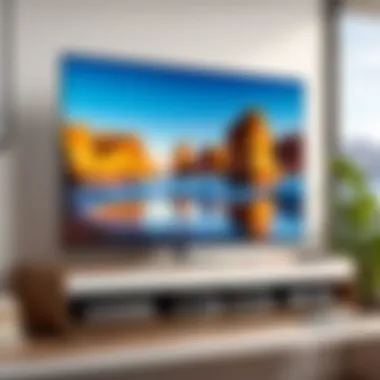
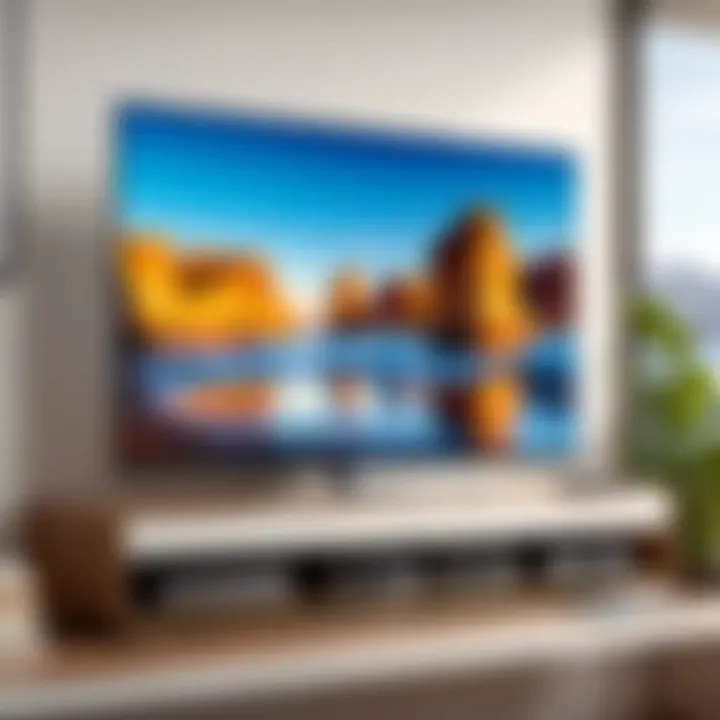
By following these guidelines, you’re sure to troubleshoot any connection issues and get back to enjoying the sights and sounds your Philips TV and mobile device can offer.
Maximizing Usage of Philips TV Features
When it comes to enjoying your entertainment setup to the fullest, understanding and utilizing the features available on your Philips TV can make a monumental difference. Maximizing usage of these features is crucial, especially when you're connecting your mobile devices for seamless integration. Beyond just viewing content, Philips TVs offer a myriad of functionalities that can enhance your experience, ranging from accessing online content to adjusting display settings based on the type of media being consumed.
One primary element is understanding the built-in apps available. Philips TV supports an assortment of applications that allow for streaming, gaming, and even sharing content directly from your phone. This opens the door for a more dynamic way to view your favorite shows or movies.
Besides built-in apps, features like screen sharing can transform how you interact with your television. For instance, if you’re watching a presentation, playing games, or even browsing photos, screen sharing gives you the flexibility to use your phone’s functionalities on a larger display.
Moreover, Philips TVs often incorporate smart features that enhance the connectivity with smartphones. This includes voice-command capabilities and customizable settings that enable easy access to applications directly from your device. The benefits don’t just stop at convenience—they also allow for a tailored viewing experience, taking user preferences into account.
"Embracing the full suite of features on your Philips TV allows you to bridge the gap between traditional television watching and modern, interactive experiences."
Exploring Additional Features on Philips TV
Philips TVs come packed with a wealth of features that can often go unnoticed. For the tech-savvy individual, understanding and utilizing these can lead to a far richer experience. For example, features like Ambilight technology create a more immersive atmosphere by extending the colors on the screen beyond the frame of the TV. This not only makes for a stunning visual experience but also provides an added layer of engagement for viewers.
Furthermore, multi-view capabilities enable users to enjoy multiple inputs on the screen simultaneously. Imagine watching a football match while keeping an eye on social media updates or checking scores—it opens up infinite possibilities for multitasking.
Other notable features include:
- Smart TV integration for easy browsing through online platforms.
- Parental controls for managing content accessibility.
- Custom settings for optimizing sound and picture quality based on the type of media.
Integrating Your Phone's Apps with the TV
Integrating your phone's applications with a Philips TV transforms it into a central hub for multimedia consumption. Many smartphones, particularly Android models, come with applications designed to work in tandem with smart TVs. For instance, streaming apps like YouTube or Netflix often support casting directly from the phone to the TV. This not only makes it easier to share content but also improves collaboration and social viewing.
Moreover, Philips TVs may allow you to utilize applications like File Explorer to transfer documents and media directly from your phone. With this integration, the tedious task of transferring files to a USB flash drive becomes obsolete. Instead, users can manage their media library directly through their phone, sending content to the TV without hassle.
However, it’s important to ensure that both devices are connected to the same Wi-Fi network for optimal performance. This connectivity facilitates seamless browsing through your installed apps on the TV while maintaining control through your mobile device.
Epilogue: Enhancing Your Viewing Experience
In the current age, the integration of smartphones and smart televisions like Philips has transformed the way we consume media. Understanding how to connect your phone to a Philips TV via USB not only enhances your viewing experience but also opens up a realm of possibilities for content consumption.
Revisiting Key Takeaways
Reflecting on the entire process, it’s clear that connecting your phone to a Philips TV provides several benefits. First, it enables direct file access from your phone's storage without the need for internet connectivity, ensuring a smooth experience even in areas with patchy network signals. Second, by transferring videos, photos, and music from your phone to your TV, you can share moments with family or friends on a larger screen, enhancing the emotional impact of your content.
Here are some essential points to remember:
- Device Compatibility: Ensure your phone and TV model are compatible with USB functionality.
- USB Cable Selection: Different cables may yield different performance—opt for one that meets your data transfer needs.
- Settings Adjustment: Properly adjusting TV input settings is crucial for a seamless experience.
To sum it up, easy access to media files combined with a big-screen experience can significantly improve how we enjoy entertainment.
Future Considerations for Device Connectivity
As technology progresses, the way we connect our devices will also evolve. Future Philips TV models may introduce more advanced connectivity options, paving the way for enhanced features such as faster data transfer rates, wireless alternatives, or even system upgrades that might change how USB connections function.
Moreover, it’s worth keeping an eye on trends in smart technology. As smart home devices gain traction, their integration with TVs could be seamless, further enhancing user experience. Here are a few points to consider:
- Wireless Technology: Look out for advancements in wireless transmission that could eliminate the need for cables altogether.
- App Integration: Future iterations of Philips TV may offer built-in apps optimized for specific mobile functionalities, making app connectivity far easier.
- User Interface Improvements: Expect better user interfaces on TVs and phones, simplifying the process of accessing and managing content.
Staying updated on technological advancements will empower users to make the best decisions for enhancing their viewing experience.
As users become more tech-savvy, understanding these shifts can also contribute to how you optimize your entertainment setup, ensuring that you’re always on the cutting edge of media consumption.







